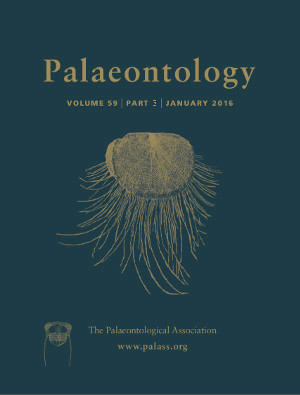Reg. Charity No. 1168330

The limited fossil record of enteropneust hemichordates (acorn worms) and the few external features that distinguish the four families have provided a challenge to our understanding of the evolution of the group and their various feeding adaptations. The middle Pennsylvanian Saccoglossus testa sp. nov. from the Mazon Creek, Westfalian D Carbonate Formation, Francis Creek Shale of northern Illinois provides evidence for the exploitation of surface sediments. Saccoglossus testa has a long proboscis characteristic of the extant genus Saccoglossus, a specialist in surface deposit feeding. The collar is as long as it is wide. The anterior trunk lacks a distinctively wide branchial region. These three features distinguish it from its sympatric enteropneust species Mazoglossus ramsdelli Bardack that has a proboscis characteristic of an infaunal deposit feeder. It is the seventh known species of fossil enteropneust, including a resting trace of a Lower Triassic fossil that has collar lips that characterize the extant deep‐sea family Torquaratoridae, and which represents a second parallel evolution of surface deposit feeding. An analysis of the seven fossils shows that the earliest Enteropneusta had a relatively simple harrimaniid‐like body plan, and that the spengelid, the torquaratorid and lastly the most complex ptychoderid body plan appeared in that chronological order.